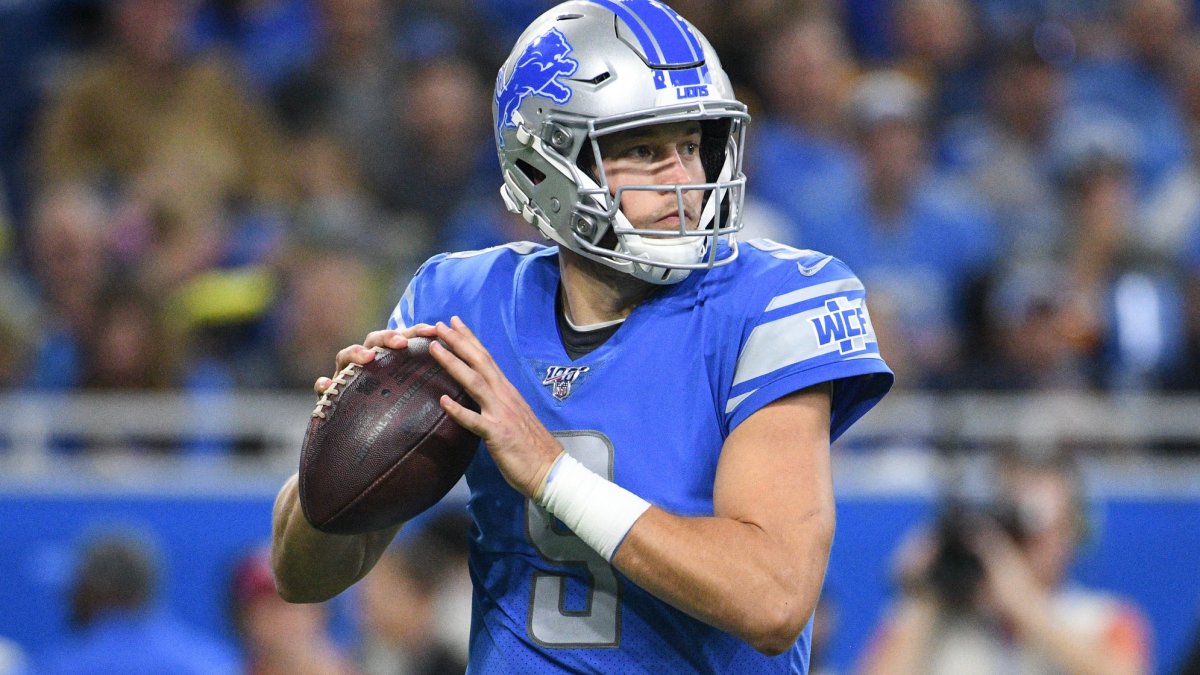How do you maximize a quarterback’s skillset? How do you create the most efficient offense possible?
These are staple questions coaches must answer every season. And especially in cases in which the quarterback is not clearly among the elite, decisions must be made regarding which type of passing attack best fits each signal-caller.
Last year, Detroit Lions quarterback Matthew Stafford made the biggest single-season jump in average depth of target since 2006, increasing his average throw by an incredible 4.3 yards down the field. The result was a more efficient passing offense in Detroit, though they didn’t reap the immediate benefits due to some bad luck, poor defense and a Stafford injury. However, the premise is an interesting one, especially when it comes to a quarterback like Stafford who is clearly among the league’s middle class. What’s the best way to use his skillset?
Using Stafford’s season as a jumping-off point, we looked at every season in which there was a significant difference in aDOT from the previous year. As it turns out, the most extreme jumps in aDOT have led to some of the biggest jumps in offensive production since 2006. The biggest drops in aDOT led to more of an even, mixed bag of success or failure the following season.
To further the study, I took out the top-10 quarterbacks by PFF grade since 2006, as the elite quarterbacks have various styles and multiple years of success where they’ve generally found their own mix of short, intermediate, and deep passing to lead high-end offenses. As I pointed out when identifying the biggest outlier QB seasons of the decade, only nine quarterbacks make up over 80% of the top-50 passing seasons of the 2010s, so offensive coordinators aren’t in as much of a bind when trying to figure out how to maximize their skillsets.
However, when saddled with a non-elite quarterback, what is the best offensive strategy to use in order to chase that outlier season? While the results are not completely cut and dry, the numbers point toward a more aggressive style rather than a conservative one. This concept is uncomfortable for many coaches who want to avoid turnovers at all costs, leading to a risk-averse attack due to a lack of trust in the quarterback. But perhaps the best course of action is going the other way with a more aggressive downfield passing attack that might be more uncomfortable but has a higher ceiling if all goes well.
Aggressive changes have a higher ceiling
Since 2006, 30 “non-elite” quarterbacks have seen an increase of at least 1.0 yard per attempt in aDOT from year to year and 66.7% of those seasons have resulted in an increase in EPA/play (expected points added per play) for their passing offense. On the other hand, 52 quarterbacks have decreased by 1.0 yard per attempt in aDOT and only 46.2% saw an increase in EPA/play the following year.
| Non-Elite QBs | EPA Diff > 0 | Total Seasons | PCT |
| ADOT +1.0 | 20 | 30 | 66.7% |
| ADOT -1.0 | 24 | 52 | 46.2% |
| Minimal Change | 40 | 83 | 48.2% |
| ADOT +0.5 | 33 | 53 | 62.3% |
| ADOT -0.5 | 42 | 85 | 49.4% |
Not only did the more aggressive changes also lead to more productive offenses, but they led to some of the biggest positive outlier seasons in NFL history. Here’s a look at the quarterbacks with at least a 1.0-yard increase in aDOT.
Exclusive content for premium subscribers

WANT TO KEEP READING?
Dominate Fantasy Football & Betting with AI-Powered Data & Tools Trusted By All 32 Teams
Already have a subscription? Log in



 © 2025 PFF - all rights reserved.
© 2025 PFF - all rights reserved.